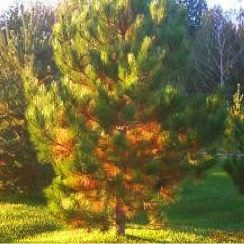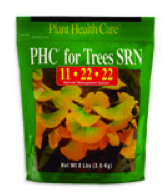Overseeding Lawns

Overseeding lawns consisting of Cool season grasses should be done in late summer or early fall. There are many reasons for this. With fall germination, the young grass will have two or three months to become better established before temperatures drop too low and growth stops. Next spring, the young plants will have another few months to develop deeper roots before the summer heat sets in. This is the primary reason, but there are also other reasons for overseeding lawns in the fall. Below are a few:
- Overseeding lawns in fall reduces or eliminates competition from summer weedy grasses, such as crabgrass, foxtails, and other weeds.
- Overseeding lawns in fall reduces or eliminates competition from summer weedy grasses, such as crabgrass, foxtails, and other weeds.
- Rain amounts and soil moisture is generally better in the fall.
[top]
National Seed's Recommended Seed Mixes for Overseeding
Field of Dreams™ Re-seeder Mixture
- 25% Nuchicago Kentucky Bluegrass
- 25% Freedom 3 Kentucky Bluegrass
- 25% Monterey 2 or La Quinta Perennial Ryegrass
- 25% Top Gun or Revenge GLX Perennial Ryegrass
If necessary, improved Bluegrasses or Ryegrasses may be used as subs.
Field of Dreams™ Athletic Turf Mixture
- 30% Goalkeeper or Monterey 2 Perennial Ryegrass
- 30% Top Gun or Improved Perennial Ryegrass
- 20% Nuchicago or Improved Kentucky Bluegrass
- 20% Freedom 3 or Improved Kentucky Bluegrass
Greenskeepers Glamour Mixture
- 30% Kentucky Bluegrass 98/85
- 30% Creeping Red Fescue
- 40% Containing 2 Turf-type Perennial Ryegrasses
[top]

Pro Ap Starter Fertilizer
| Guaranteed Analysis |
|
| Total Nitrogen (N) |
9.00% |
| 7.02% Ammoniacal Nitrogen |
|
| 1.98% Urea Nitrogen |
|
| 0.00% Water Soluble Organic Nitrogen (Dicyandiamide) |
|
| Other Water Soluble Nitrogen |
|
| Available Phosphate (P2O5) |
18.00% |
| Soluble Potash (K2O) |
9.00% |
| Sulfur (S) |
0.00% |
| 0.00% Free Sulfur |
|
| 0.00% Combined Sulfur |
|
| Chlorine (Cl) Max |
7.65% |
[top]
Seasonal Needle Dropping

Coming soon to an evergreen near you: seasonal needle
drop (also known as normal needle drop). In autumn, man
evergreens will drop older needles. This is a normal process.
Needles on an evergreen live for a limited number of years.
At the end of their lives, these needles will turn brown and
eventually fall off. On some evergreens, such as white pine
or arborvitae, this process can be very dramatic, making the
evergreen look like it is dying. To determine if your tree has
a disease or is going through normal needle drop, check the
location of the browning. Trees going through normal
needle drop will have a fairly uniform brown appearance in
the interior of the tree since this is where the oldest needles
are located (figure 12). After a few weeks the brown needles
will fall off leaving the tree looking normal and healthy. Trees with a disease may have brown needles in
various areas of the tree, depending on the disease, but the appearance will not be as uniform as that of
needle drop. Diseased needles may eventually fall off, but the tree won’t look healthy.
For more insight on seasonal needle dropping visit The Morton Arboretum website.
[top]

PHC for Trees SRN 11-22-22
PHC for Trees SRN 11-22-22 is a fully soluble product that provides both chemical and biological fertility. Its chemically-based elements address trees’ immediate nutritional needs, while its beneficial bacteria will help to sustain fertility over the long term.
[top]
Trivia Question
First five to answer correctly win a National Seed camo hat!
For our area, what range of PH is considered acceptable?
- (A) 4.5-6.0
- (B) 6.0-7.5
- (C) 7.5-9.0
[top]
Upcoming Events
ILCA-IPLCA-CBG Turf Education Day (TED) - Chicago Botanic Garden
- September 12, 2014
- Chicago Botanic Garden
- 1000 Lake Cook Road
Glencoe, IL 60022
- 8:00am - 3:15pm
Tree Injection Summit
This summit combines cutting edge presentations, demonstrations, and practical application discussions related to tree injection. Covering everything from the deeply scientific to the practical, all aspects of tree injection will be reviewed. A panel discussion will round out the summit. Breakfast, lunch and afternoon coffee is included. 8 CEUS
- September 24, 2014
- Morton Arboretum
- 4100 Illinois Route 53
Lisle, IL 60532
[top]
Contact your sales rep for more information:
Tom Breier: tom.breier@natseed.com (630) 417-9054
Tim Breier: tim.breier@natseed.com (630) 417-9056
Dan Breier: dan.breier@natseed.com (630) 417-9055
Mark Breier: mark.breier@natseed.com (630) 417-9057
Kevin Spiller: kevin.spiller@natseed.com (630) 903-5240 |